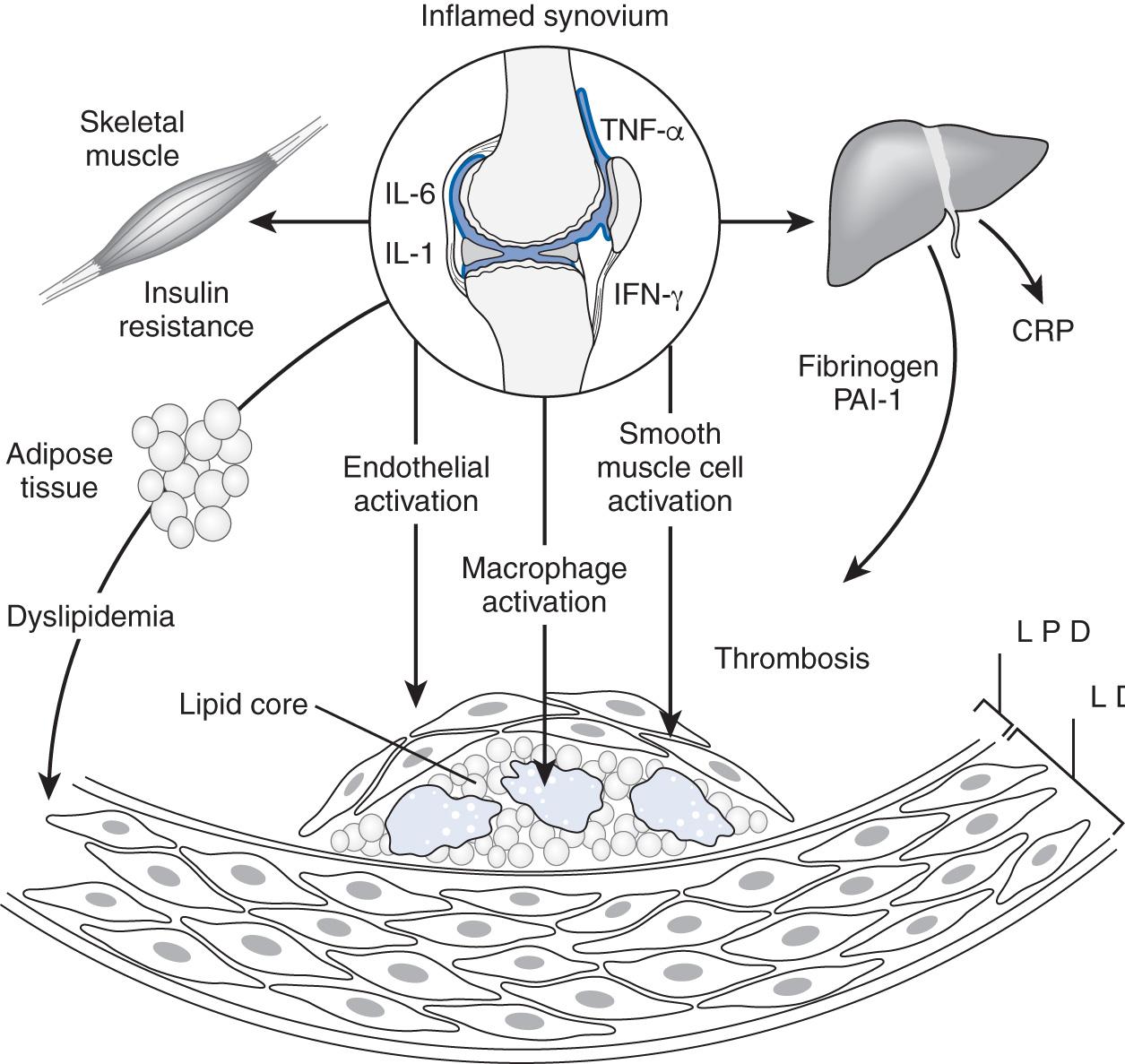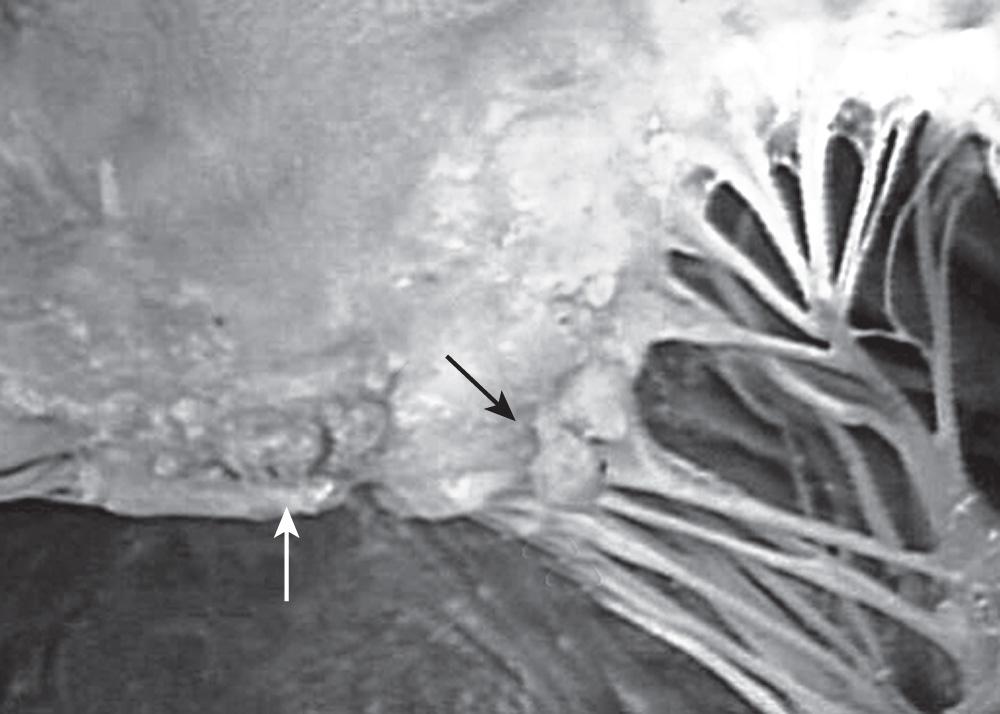Physical Address
304 North Cardinal St.
Dorchester Center, MA 02124
Ischemic heart disease is the leading cause of mortality in patients with RA. Compared to the general population, patients with RA have a 50% increased risk of cardiovascular mortality. Other common cardiac manifestations of RA include pericarditis, myocarditis, and valvular thickening resulting in aortic and/or mitral insufficiency.
As depicted in Fig. 47.1 , chronic release of proinflammatory cytokines (e.g., tumor necrosis factor-α [TNF-α], interferon-γ [IFN-γ], interleukin-1 [IL-1], IL-6) in patients with RA is associated with an adverse lipid profile, insulin resistance, hypercoagulability (e.g., elevated fibrinogen and plasminogen activator inhibitor [PAI]-1), and direct activation of the endothelium and subendothelial macrophages. Together, these effects result in accelerated formation of high-risk atherosclerotic plaques (e.g., thin fibrous cap) that increase the risk of acute coronary syndromes in patients with RA.

Pericarditis is the most common cardiac manifestation of SLE and can occur with or without a pericardial effusion. Nonbacterial thrombotic endocarditis (NBTE) is also common, particularly in patients with antiphospholipid antibodies. As shown in Fig. 47.2 , the vegetations seen in NBTE are generally small and most often affect the mitral valve. These vegetations carry a high risk of thromboembolism, necessitating lifelong anticoagulation. Lastly, SLE is an independent risk factor for premature coronary artery atherosclerosis, particularly in patients with antiphospholipid antibodies, lupus nephritis, and/or severe disease activity.

The annual incidence of drug-induced lupus is 15% to 20% in patients taking procainamide (a class Ia antiarrhythmic) and 5% to 10% in patients taking hydralazine (a direct smooth muscle cell relaxant), placing these two drugs in the highest risk category. Quinidine (another class Ia antiarrhythmic) also carries a moderate risk of drug-induced lupus.
Become a Clinical Tree membership for Full access and enjoy Unlimited articles
If you are a member. Log in here